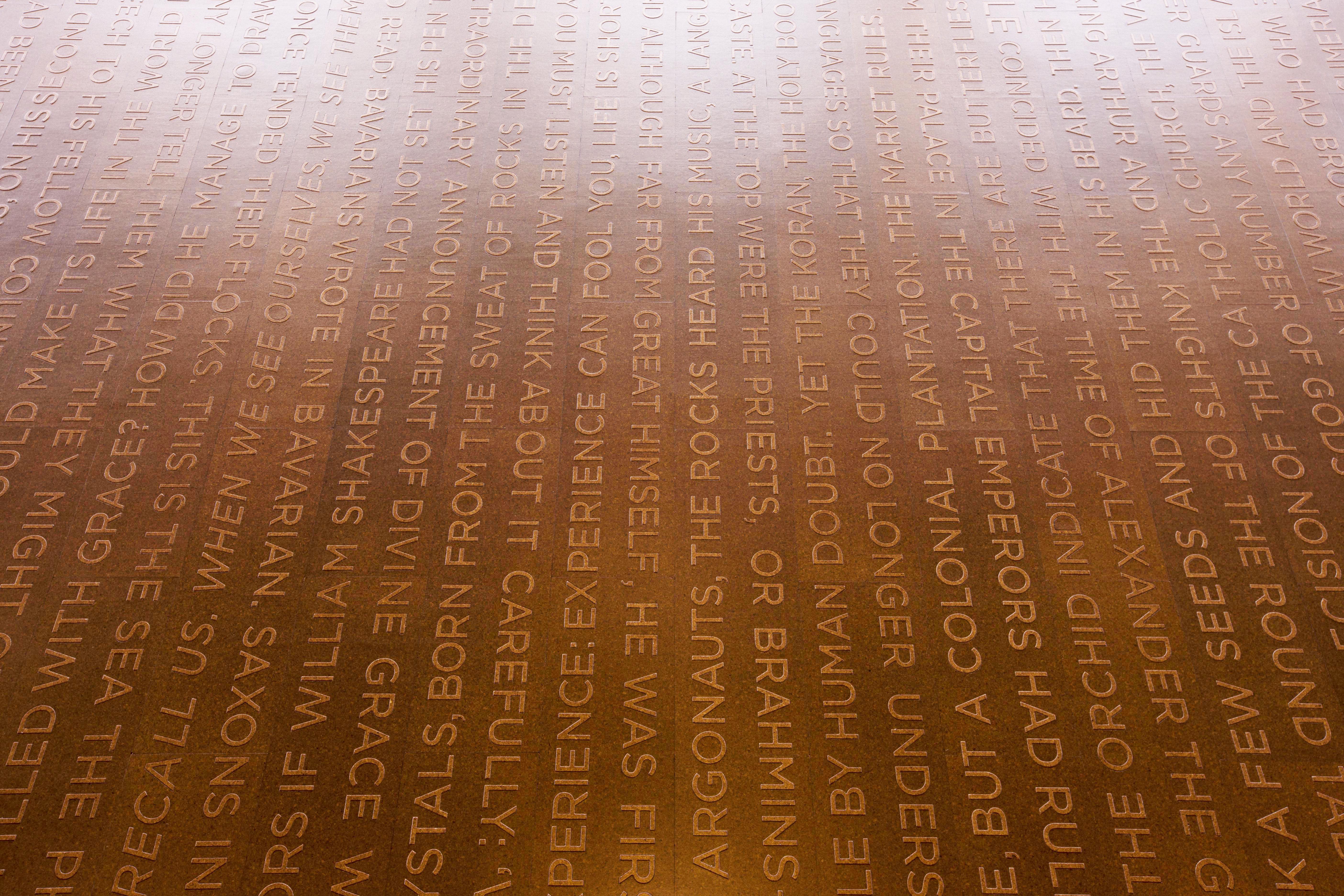

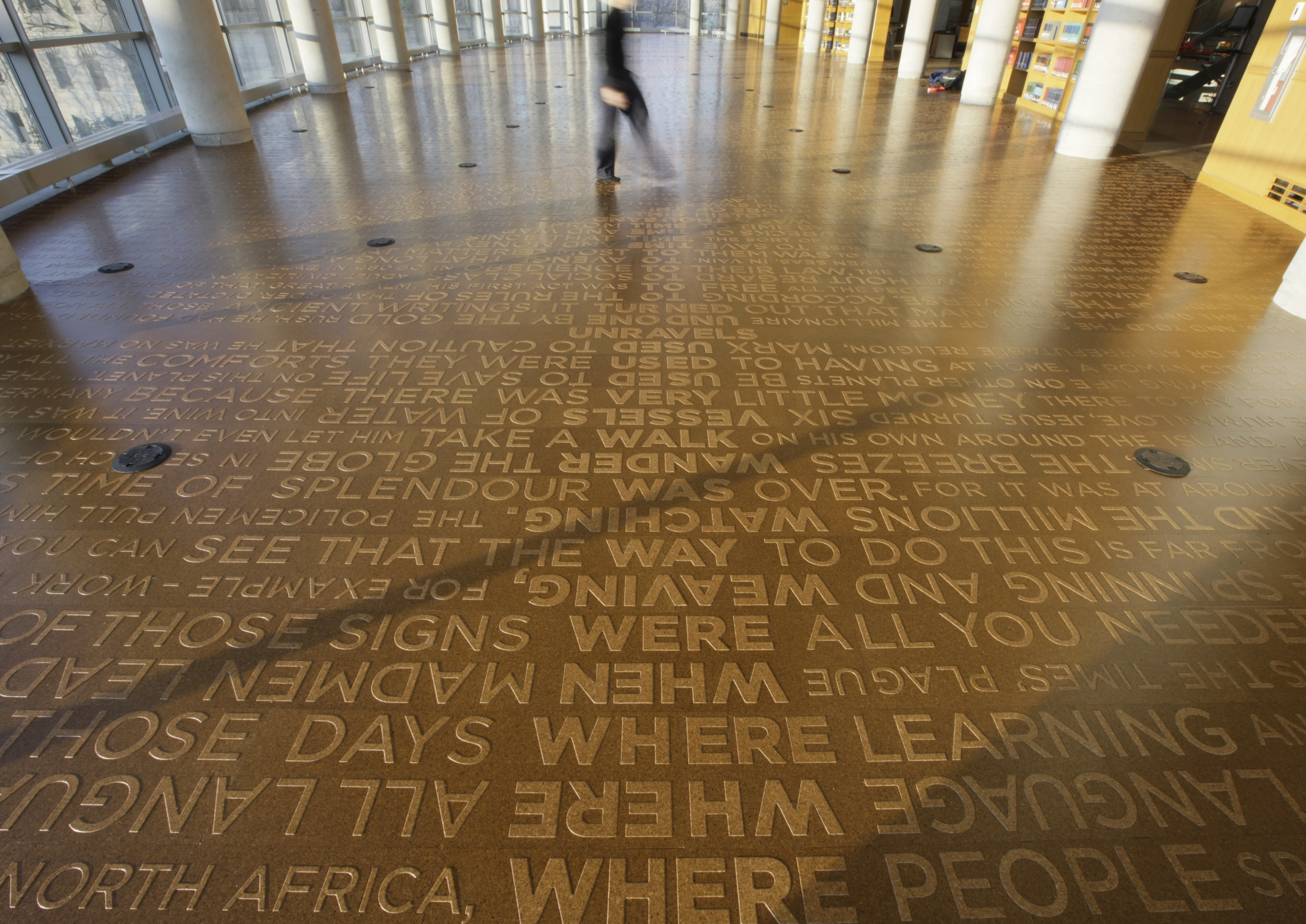
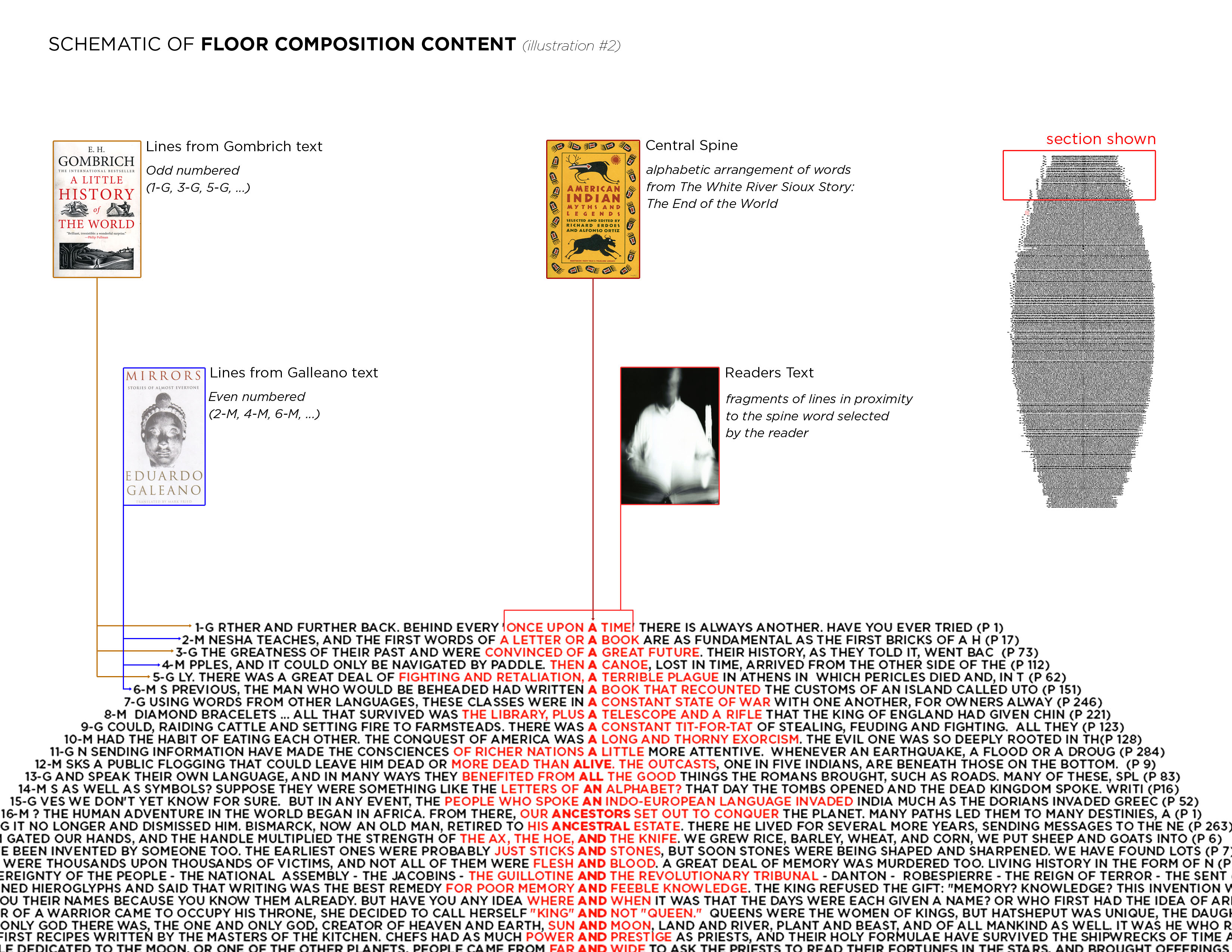
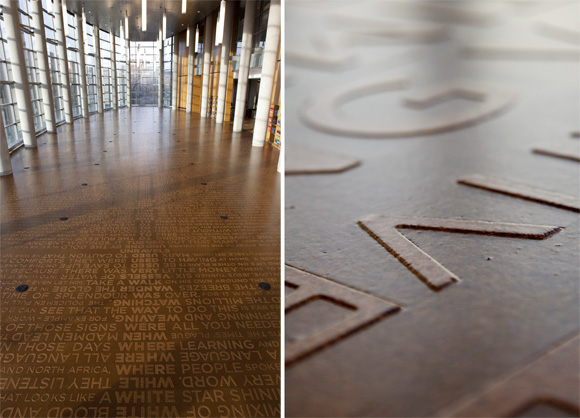
A two-color cork floor laid as a field of words set in relief and located in the Thompson Library Buckeye Reading Room. The text is created by an alphabetic intersection and line-by-line weaving of three different accountings of world history that are arranged in a literary concordance. The spine along the north-south axis is composed of 299 words in A-Z order and adapted from The End of the World – a White River Sioux tale. The east west lines of text intersect this story with prose fragments from A Little History of the World by E.H. Gombrich (1936) and Mirrors: Stories of Almost Everyone by Eduardo Galeano (2009).
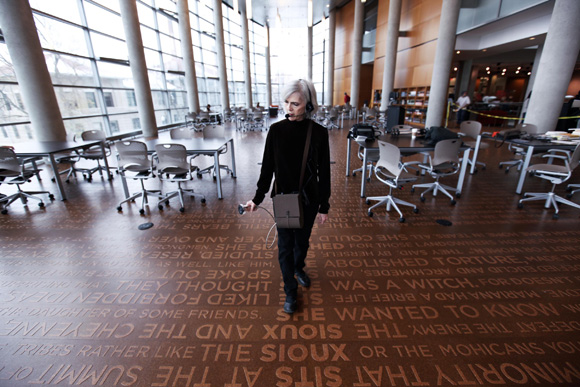
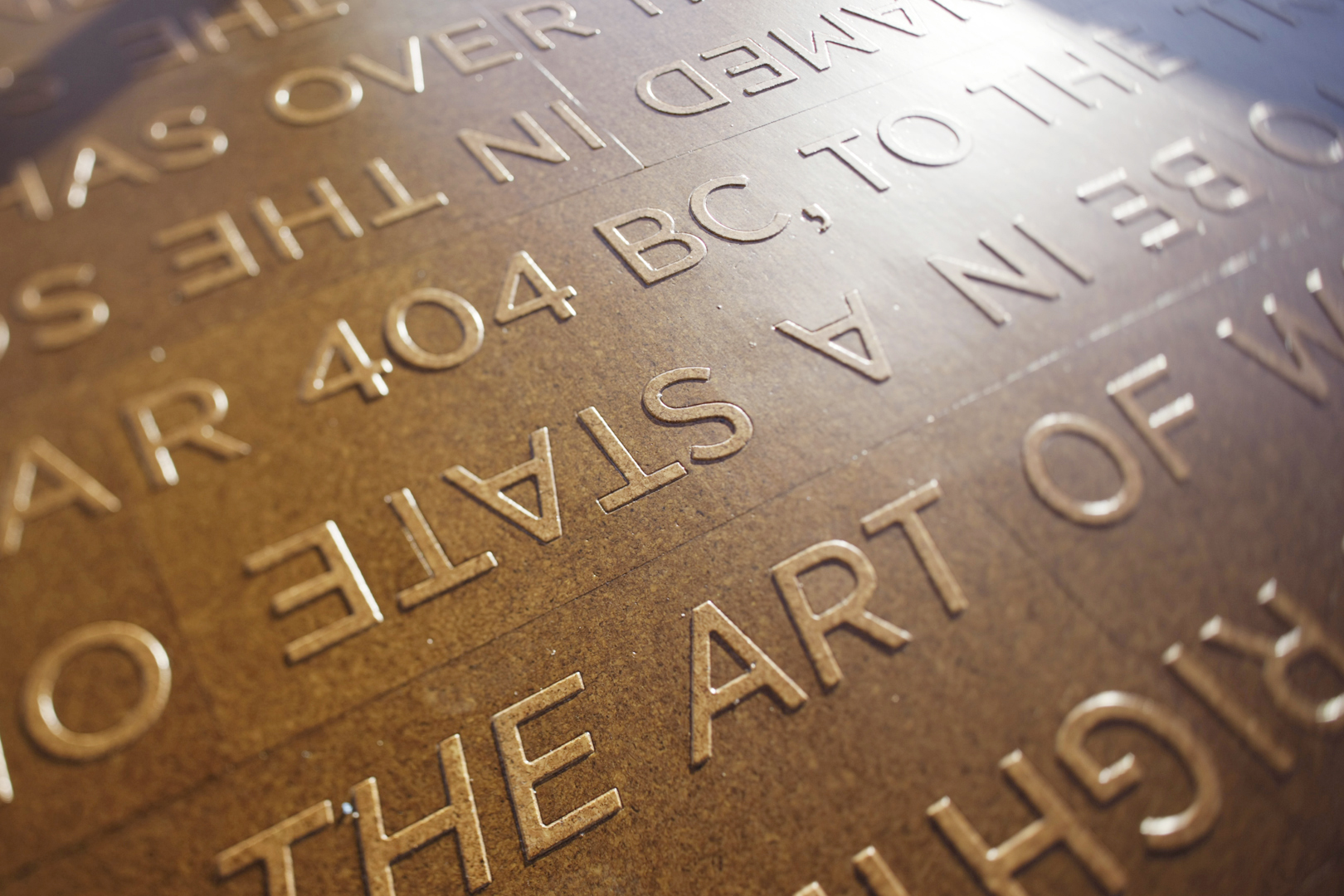
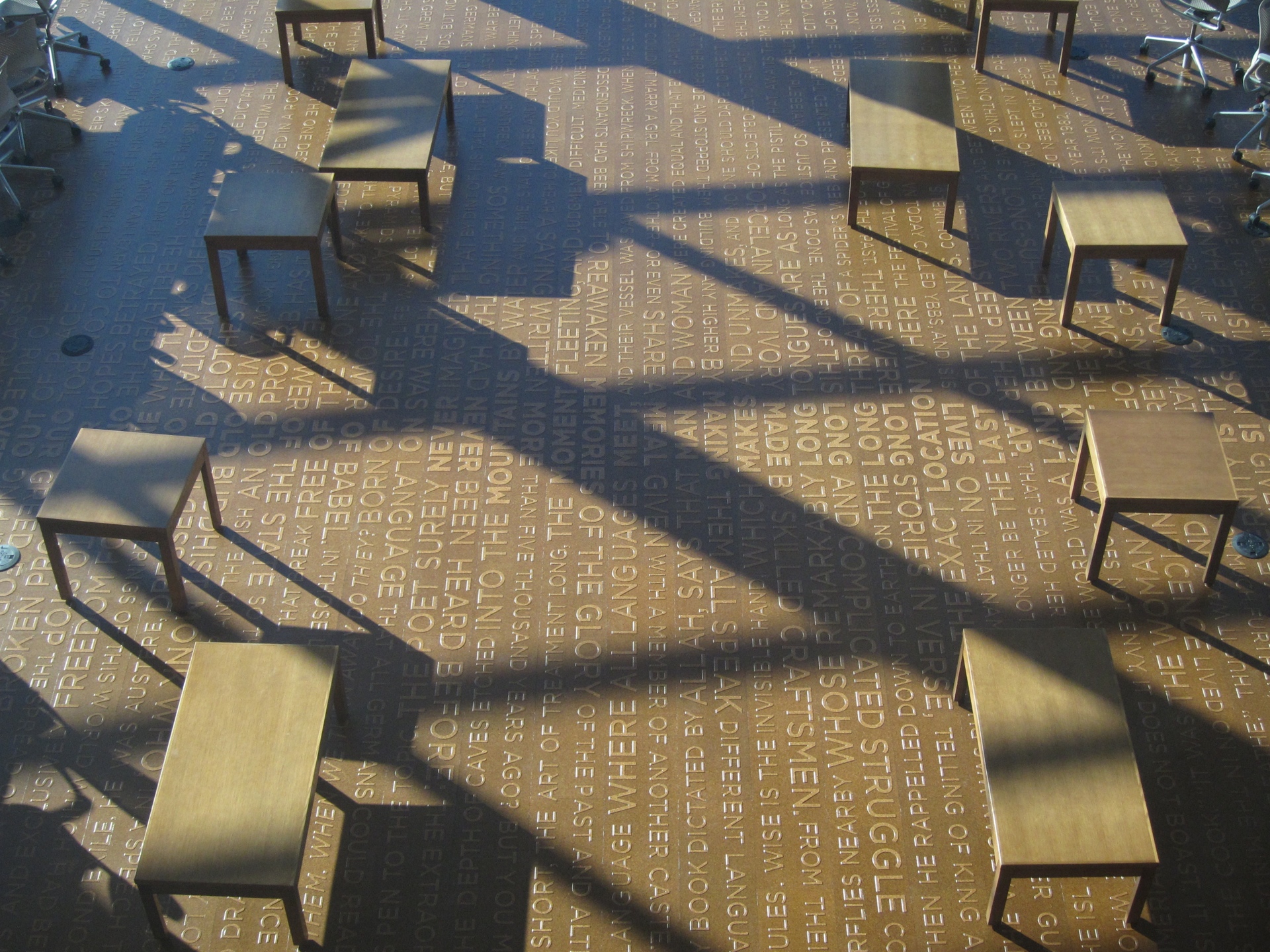
Photo credits: Fredrik Marsh, Jenny Fine